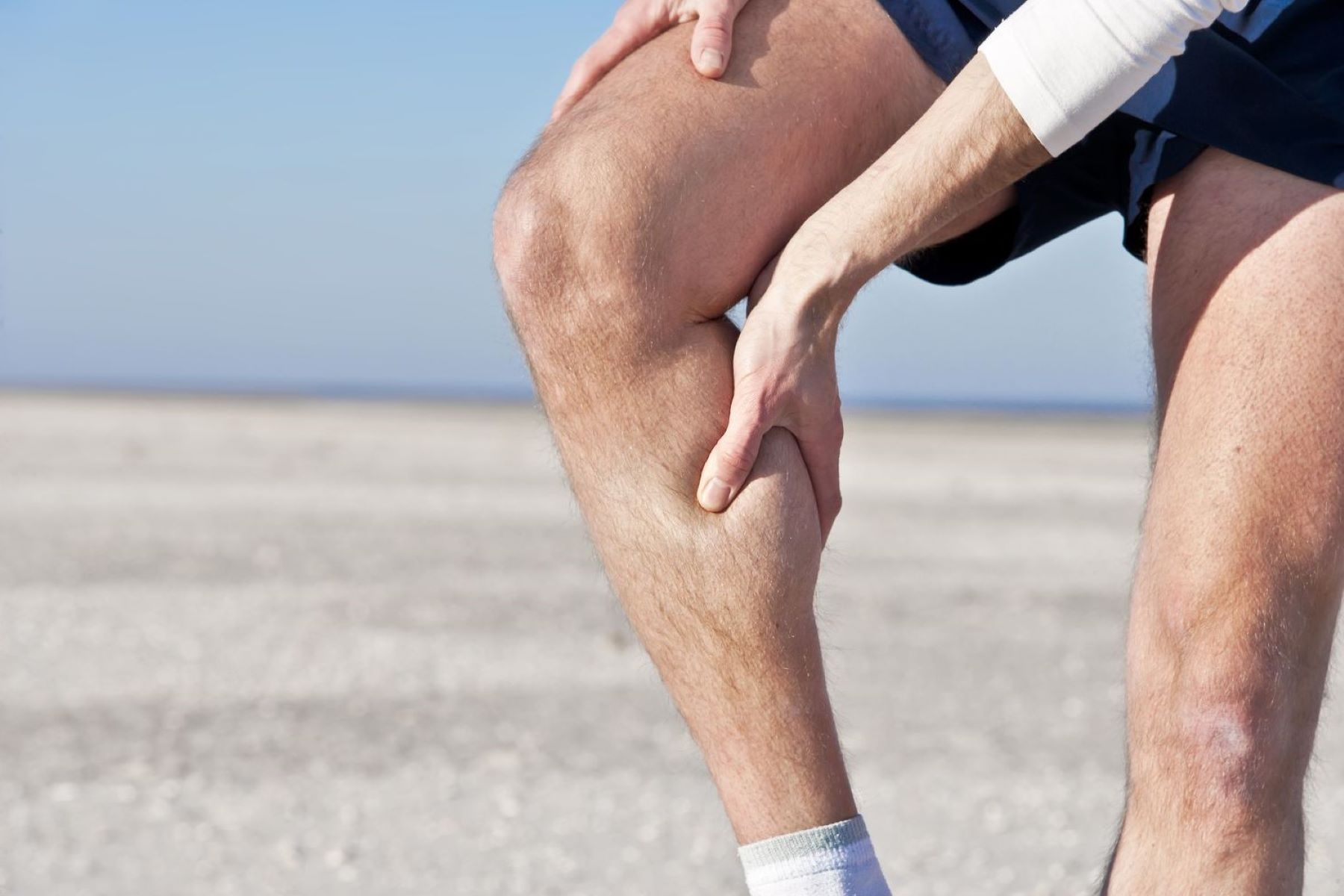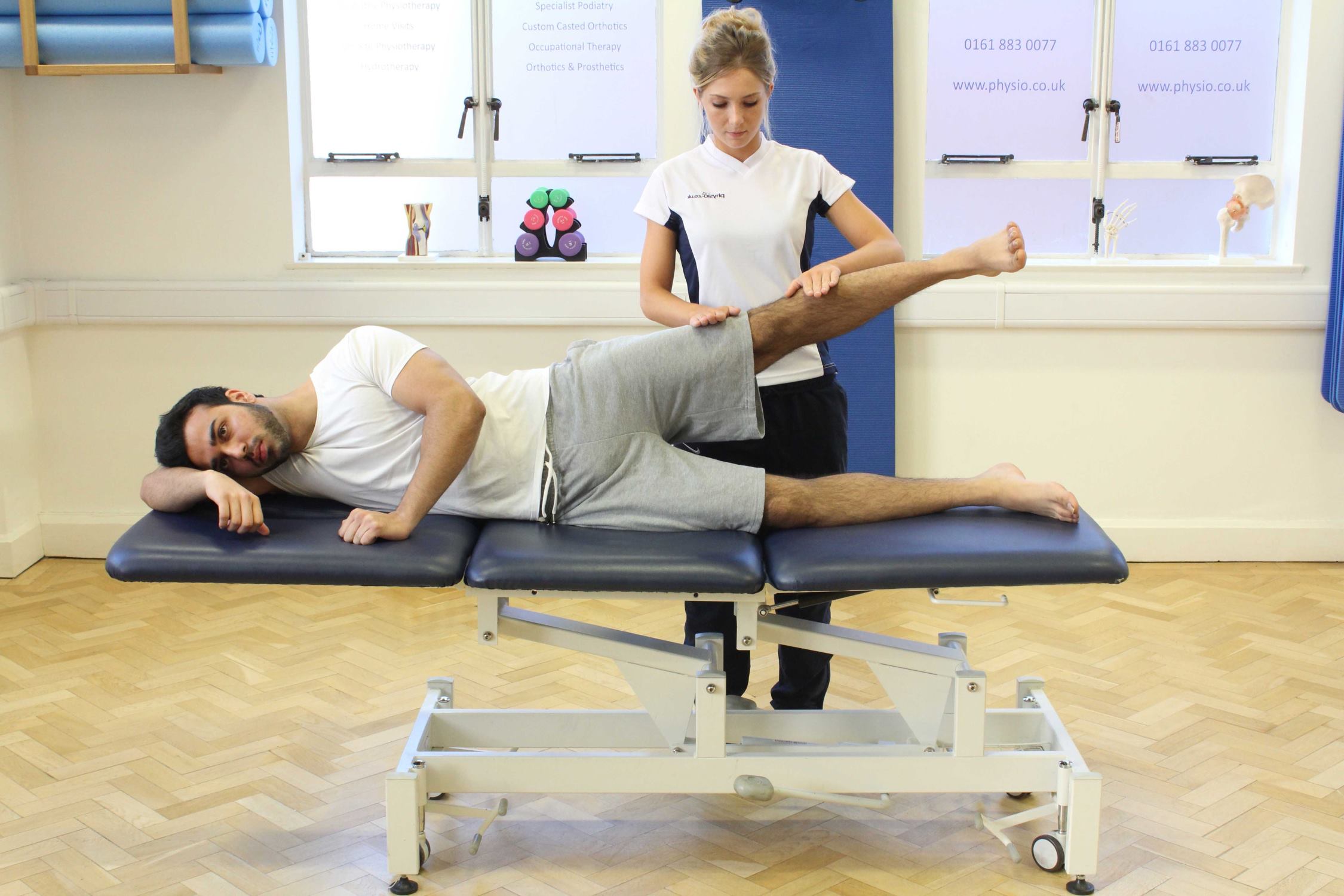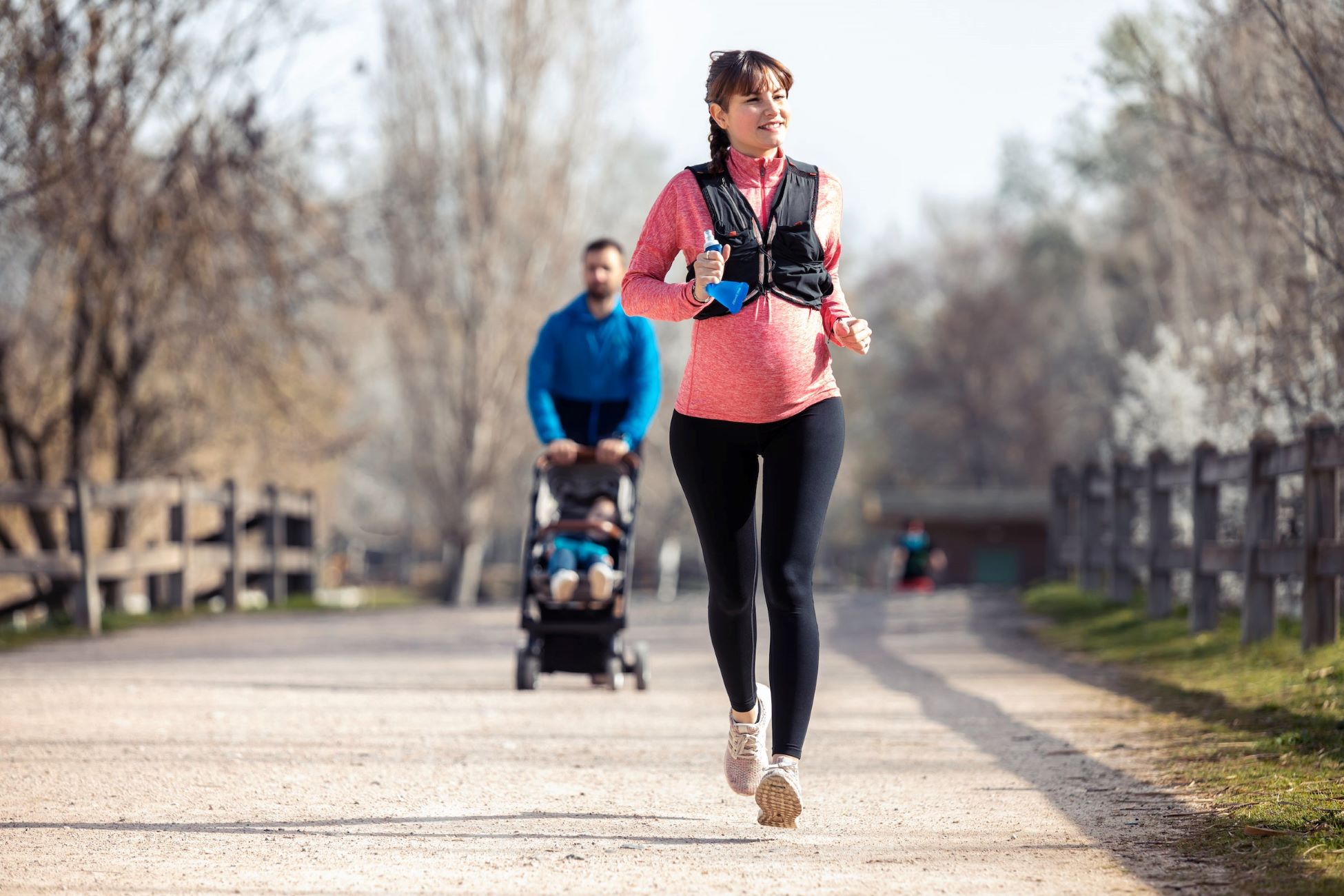Home>Health & Nutrition>Injury Prevention>Understanding Calf Muscle Tears: A Comprehensive Guide


Injury Prevention
Understanding Calf Muscle Tears: A Comprehensive Guide
Published: February 24, 2024
Learn how to prevent calf muscle tears with this comprehensive guide. Discover effective strategies to avoid this common injury and keep your muscles strong and healthy.
(Many of the links in this article redirect to a specific reviewed product. Your purchase of these products through affiliate links helps to generate commission for Therunningadvisor.com, at no extra cost. Learn more)
Table of Contents
Introduction
Calf muscle tears are a common yet often underestimated injury that can significantly impact an individual's mobility and overall well-being. Whether you're an athlete, fitness enthusiast, or someone who simply enjoys an active lifestyle, understanding the intricacies of calf muscle tears is crucial for injury prevention and effective management.
In this comprehensive guide, we will delve into the anatomy of the calf muscles, explore the various causes of calf muscle tears, discuss the symptoms and diagnosis of this injury, and provide insights into the available treatment options and rehabilitation strategies. Furthermore, we will highlight essential prevention techniques to safeguard against the occurrence of calf muscle tears.
By gaining a deeper understanding of this prevalent injury, you will be better equipped to recognize the warning signs, seek appropriate medical attention, and implement preventive measures to minimize the risk of experiencing a calf muscle tear. Whether you're aiming to optimize your athletic performance, maintain an active lifestyle, or simply prioritize your physical well-being, the knowledge imparted in this guide will empower you to make informed decisions regarding the care and protection of your calf muscles.
Join us on this enlightening journey as we unravel the complexities of calf muscle tears, equipping you with the knowledge and insights necessary to navigate the realm of injury prevention and management with confidence and resilience.
Anatomy of the Calf Muscles
The calf muscles, comprising the gastrocnemius and soleus muscles, play a pivotal role in facilitating various movements, including walking, running, and jumping. Understanding the intricate anatomy of these muscles is essential for comprehending the potential vulnerabilities that can lead to tears and injuries.
The gastrocnemius muscle, situated at the back of the lower leg, is the larger and more superficial of the two calf muscles. It originates from the femur, forming two prominent heads that converge to create a robust tendon known as the Achilles tendon. This tendon inserts into the calcaneus, or heel bone, enabling the transmission of force from the calf muscles to the foot during movement.
In contrast, the soleus muscle lies beneath the gastrocnemius and has its origins on the tibia and fibula bones. This powerful muscle also contributes to the Achilles tendon, which collectively serves as a vital structure for plantarflexion, the movement that points the foot downward.
Both the gastrocnemius and soleus muscles are predominantly responsible for plantarflexion of the ankle joint, a pivotal action in activities such as walking, running, and propelling the body forward. Additionally, these muscles aid in maintaining posture and providing stability to the ankle and lower leg.
The intricate interplay between the calf muscles, Achilles tendon, and surrounding connective tissues underscores the significance of maintaining their strength and flexibility to mitigate the risk of injury. Furthermore, an understanding of the calf muscles' anatomical intricacies is instrumental in devising targeted injury prevention strategies and rehabilitation protocols.
By comprehending the anatomical nuances of the calf muscles, individuals can cultivate a profound awareness of the structures that underpin their lower limb function. This knowledge forms the cornerstone of injury prevention and rehabilitation efforts, empowering individuals to safeguard their calf muscles and optimize their physical performance.
Causes of Calf Muscle Tears
Calf muscle tears, also known as calf strains or pulls, can occur due to various factors, often stemming from overexertion, inadequate warm-up, or sudden movements that place excessive stress on the calf muscles. Understanding the diverse array of causes behind these debilitating injuries is pivotal in implementing effective preventive measures and minimizing the risk of experiencing a calf muscle tear.
-
Overexertion and Fatigue: Engaging in strenuous physical activities, particularly those involving repetitive or prolonged use of the calf muscles, can lead to overexertion and subsequent muscle fatigue. This heightened state of fatigue diminishes the muscles' capacity to withstand stress, rendering them more susceptible to tears during activities such as running, jumping, or sudden accelerations.
-
Inadequate Warm-Up: Failing to adequately warm up the calf muscles before engaging in intense physical activities can significantly heighten the risk of sustaining a tear. A thorough warm-up routine, encompassing dynamic stretches and gradual mobilization exercises, is essential for preparing the calf muscles and enhancing their flexibility and resilience.
-
Sudden Movements: Abrupt and forceful movements, such as rapid changes in direction or explosive accelerations, can place immense strain on the calf muscles, predisposing them to tears. These sudden movements, often encountered in sports and high-impact activities, can overwhelm the muscles' capacity to adapt to the rapid changes in force and direction.
-
Muscle Imbalance: An imbalance in the strength and flexibility of the calf muscles and surrounding musculature can contribute to an increased risk of tears. Weakness in the calf muscles or disproportionate strength imbalances between the gastrocnemius and soleus muscles can create undue stress on the tissues, heightening the likelihood of a tear.
-
Inadequate Recovery: Insufficient rest and recovery periods between intense physical activities can impede the calf muscles' ability to recuperate and repair themselves. Prolonged or repetitive stress on fatigued muscles can compromise their structural integrity, culminating in the manifestation of tears and strains.
-
Inadequate Footwear and Terrain: Inappropriate footwear, particularly those lacking adequate support and cushioning, can exacerbate the strain on the calf muscles. Additionally, engaging in high-impact activities on uneven or challenging terrain can subject the calf muscles to unpredictable forces, increasing the risk of tears and injuries.
By comprehensively delineating the multifaceted causes of calf muscle tears, individuals can gain valuable insights into the diverse factors that can precipitate these injurious events. Armed with this knowledge, individuals can proactively implement targeted preventive measures and lifestyle modifications to safeguard their calf muscles and mitigate the risk of experiencing a debilitating tear.
Symptoms and Diagnosis
Identifying the symptoms of a calf muscle tear is paramount in facilitating prompt diagnosis and initiating appropriate treatment interventions. The manifestation of a calf muscle tear is often accompanied by distinct symptoms that warrant careful attention and evaluation. Understanding these symptoms and the diagnostic procedures employed to ascertain the extent of the injury is instrumental in guiding individuals towards effective management and rehabilitation.
Symptoms
-
Sudden, Sharp Pain: A calf muscle tear typically elicits a sudden and sharp pain in the back of the lower leg. This acute onset of pain is often exacerbated during activities that engage the calf muscles, such as walking, running, or jumping.
-
Swelling and Tenderness: Following a calf muscle tear, individuals may experience localized swelling and tenderness in the affected area. The injured calf muscle may exhibit palpable swelling and heightened sensitivity to touch, indicative of tissue damage and inflammation.
-
Impaired Mobility: A calf muscle tear can significantly impede an individual's mobility, leading to difficulty in bearing weight on the affected leg. Movements such as plantarflexion (pointing the foot downward) and pushing off the ground may elicit discomfort and hinder the individual's ability to engage in routine activities.
-
Visible Bruising: In some cases, a calf muscle tear may be accompanied by visible bruising or discoloration in the area of the injury. The presence of bruising signifies the extravasation of blood from damaged blood vessels, highlighting the severity of the muscle tear.
Diagnosis
Accurate diagnosis of a calf muscle tear entails a comprehensive assessment of the individual's symptoms, coupled with targeted physical examinations and diagnostic imaging techniques. Healthcare professionals employ various methods to ascertain the extent and severity of the injury, enabling them to formulate a tailored treatment plan.
-
Clinical Evaluation: A thorough clinical evaluation involves the healthcare provider eliciting a detailed history of the injury, including the onset of symptoms and any precipitating factors. Physical examinations, encompassing palpation of the calf muscles, assessment of range of motion, and evaluation of muscle strength, aid in identifying the specific location and severity of the tear.
-
Ultrasound and MRI: Diagnostic imaging modalities, such as ultrasound and magnetic resonance imaging (MRI), play a pivotal role in visualizing the internal structures of the calf muscles. These non-invasive techniques enable healthcare professionals to assess the extent of the tear, visualize tissue damage, and delineate the precise location of the injury.
-
Muscle Function Tests: Functional assessments, including the assessment of muscle strength, flexibility, and gait analysis, provide valuable insights into the functional limitations imposed by the calf muscle tear. These tests aid in gauging the individual's capacity to engage in physical activities and guide the formulation of targeted rehabilitation protocols.
By recognizing the hallmark symptoms of a calf muscle tear and understanding the diagnostic methodologies employed to ascertain the extent of the injury, individuals can proactively seek appropriate medical evaluation and intervention. This proactive approach facilitates the implementation of timely treatment measures and rehabilitation strategies, fostering a conducive environment for optimal recovery and restoration of calf muscle function.
Treatment Options
Upon the diagnosis of a calf muscle tear, the implementation of appropriate treatment measures is pivotal in fostering optimal recovery and mitigating the risk of long-term complications. The management of a calf muscle tear encompasses a multifaceted approach aimed at alleviating pain, promoting tissue healing, and restoring the functionality of the affected muscles. By delineating the diverse treatment options available for individuals grappling with a calf muscle tear, we can elucidate the comprehensive strategies employed to facilitate effective rehabilitation and expedite the return to pre-injury activities.
Rest and Immobilization
Resting the injured calf muscle is paramount in minimizing further tissue damage and allowing the natural healing process to unfold. Immobilization, often achieved through the use of a brace or compression bandage, serves to stabilize the affected area and prevent excessive movement that could impede the healing of the torn muscle fibers. By adhering to a regimen of rest and immobilization, individuals afford the injured calf muscle the opportunity to recuperate and regenerate, laying the foundation for subsequent rehabilitation efforts.
Cryotherapy and Elevation
The application of cryotherapy, or cold therapy, to the injured calf muscle can effectively mitigate pain, inflammation, and swelling. Cold packs or ice wraps applied to the affected area serve to constrict blood vessels, reduce tissue metabolism, and alleviate discomfort. Additionally, elevating the injured leg above heart level aids in minimizing swelling and promoting efficient fluid drainage from the injured tissues, contributing to the overall management of the calf muscle tear.
Read more: A Comprehensive Guide To Running Nutrition
Physical Therapy and Rehabilitation
Engaging in targeted physical therapy and rehabilitation programs is instrumental in restoring the strength, flexibility, and functionality of the injured calf muscle. Physical therapists employ a spectrum of therapeutic modalities, including gentle stretching exercises, progressive strengthening routines, and proprioceptive training, to facilitate the gradual restoration of muscle integrity and function. These tailored rehabilitation protocols aim to address muscle imbalances, enhance tissue healing, and optimize the individual's capacity to resume normal activities.
Pharmacological Interventions
In certain cases, healthcare providers may prescribe nonsteroidal anti-inflammatory drugs (NSAIDs) to alleviate pain and reduce inflammation associated with a calf muscle tear. These medications serve as adjunctive measures to complement the overall treatment approach, providing symptomatic relief and enhancing the individual's comfort during the recovery phase.
Gradual Return to Activity
As the injured calf muscle undergoes the healing process and gains strength, a gradual return to physical activities is orchestrated under the guidance of healthcare professionals. This phased approach entails progressively reintroducing weight-bearing exercises, functional movements, and sports-specific drills, ensuring that the rehabilitated calf muscle can withstand the demands of routine activities without compromising its structural integrity.
By embracing a comprehensive array of treatment options, individuals afflicted with a calf muscle tear can navigate the path to recovery with resilience and determination. The integration of these multifaceted treatment measures fosters an environment conducive to optimal healing, empowering individuals to reclaim the functionality of their calf muscles and resume their active pursuits with confidence and vigor.
Rehabilitation and Recovery
Rehabilitation and recovery following a calf muscle tear are pivotal phases that encompass a comprehensive continuum of care aimed at restoring the functionality and resilience of the injured muscles. This multifaceted process entails a strategic amalgamation of therapeutic interventions, progressive exercises, and targeted rehabilitation protocols designed to optimize tissue healing, mitigate the risk of re-injury, and facilitate the individual's return to pre-injury activities.
Progressive Rehabilitation Protocols
Central to the rehabilitation journey is the implementation of progressive rehabilitation protocols tailored to the specific needs and functional limitations of the individual. These protocols encompass a spectrum of therapeutic modalities, including gentle stretching exercises, eccentric strengthening routines, and proprioceptive training, all of which are instrumental in fostering the gradual restoration of muscle integrity and function. By systematically advancing the intensity and complexity of rehabilitation exercises, individuals can fortify the injured calf muscles, enhance their flexibility, and cultivate proprioceptive awareness, thereby laying the groundwork for a robust and sustainable recovery.
Proprioceptive Training and Neuromuscular Re-education
Proprioceptive training forms a cornerstone of calf muscle rehabilitation, focusing on enhancing the individual's proprioceptive acuity and neuromuscular control. Through targeted exercises that challenge balance, coordination, and functional movement patterns, individuals can reestablish the intricate interplay between the calf muscles, tendons, and surrounding musculature. This neuromuscular re-education not only bolsters the stability and agility of the lower limb but also mitigates the risk of future injuries by fostering optimal neuromuscular coordination and control.
Functional Movement Assessment and Sports-Specific Training
Incorporating functional movement assessments and sports-specific training into the rehabilitation regimen is instrumental in preparing individuals for the demands of their respective activities. By simulating the movement patterns and biomechanical stresses inherent to their chosen sports or physical pursuits, individuals can progressively reintegrate functional movements, dynamic agility drills, and sport-specific exercises. This tailored approach not only accelerates the restoration of sport-specific skills but also instills confidence and resilience, empowering individuals to confidently resume their athletic endeavors with a heightened sense of physical preparedness.
Patient Education and Lifestyle Modifications
Equally vital to the rehabilitation process is patient education, encompassing comprehensive guidance on injury prevention strategies, lifestyle modifications, and self-care practices. Educating individuals on the importance of adequate warm-up routines, proper footwear selection, and gradual progression of physical activities fosters a proactive approach to injury prevention. Furthermore, imparting insights into the significance of balanced nutrition, hydration, and adequate rest underscores the holistic nature of the recovery journey, empowering individuals to optimize their overall well-being and fortify their resilience against future injuries.
Read more: Understanding And Managing Patellofemoral Pain Syndrome: A Comprehensive Guide For Runners
Collaborative Care and Long-Term Support
The rehabilitation and recovery phase thrives on collaborative care, with healthcare professionals, physical therapists, and sports medicine specialists working in unison to orchestrate a cohesive and personalized rehabilitation plan. This collaborative approach extends beyond the immediate recovery period, encompassing long-term support, periodic reassessments, and ongoing guidance to fortify the individual's physical resilience and safeguard against the recurrence of calf muscle tears.
By embracing a holistic and individualized approach to rehabilitation and recovery, individuals can navigate the path to optimal recovery with fortitude and determination. The integration of progressive rehabilitation protocols, proprioceptive training, functional movement assessments, patient education, and collaborative care fosters an environment conducive to comprehensive healing, empowering individuals to reclaim the functionality of their calf muscles and resume their active pursuits with confidence and vigor.
Prevention Strategies
Implementing proactive and targeted prevention strategies is paramount in mitigating the risk of experiencing a debilitating calf muscle tear. By embracing a multifaceted approach that encompasses injury prevention techniques, lifestyle modifications, and comprehensive musculoskeletal care, individuals can fortify the resilience of their calf muscles and safeguard against the occurrence of injurious events.
Warm-Up and Dynamic Stretching
Prior to engaging in physical activities, incorporating a thorough warm-up routine comprising dynamic stretching exercises is instrumental in preparing the calf muscles for the ensuing exertion. Dynamic stretches, such as leg swings, calf raises, and ankle rotations, serve to enhance the flexibility and suppleness of the calf muscles, minimizing the risk of tears during subsequent activities.
Gradual Progression of Intensity
Adopting a gradual and progressive approach to the intensity and duration of physical activities is pivotal in allowing the calf muscles to adapt to increasing demands. Whether embarking on a new exercise regimen or elevating the intensity of existing workouts, individuals should incrementally escalate the workload on their calf muscles, allowing for adequate adaptation and minimizing the likelihood of overexertion.
Strength and Flexibility Training
Incorporating targeted strength and flexibility training exercises into one's fitness regimen is instrumental in fortifying the resilience of the calf muscles. Exercises such as calf raises, heel drops, and eccentric loading routines bolster the strength and endurance of the calf muscles, while stretching exercises enhance their flexibility and range of motion, collectively mitigating the risk of tears and strains.
Proper Footwear and Terrain Considerations
Selecting appropriate footwear that provides adequate support, cushioning, and stability is pivotal in minimizing the strain on the calf muscles during physical activities. Additionally, being mindful of the terrain and surface characteristics when engaging in high-impact activities can mitigate the risk of unpredictable forces that could predispose the calf muscles to injurious events.
Hydration and Nutrition
Maintaining optimal hydration and balanced nutrition is integral to the overall health and resilience of the calf muscles. Adequate hydration supports the suppleness and elasticity of the muscles, while a balanced diet rich in essential nutrients, including protein, vitamins, and minerals, fortifies the structural integrity and reparative capacity of the calf muscles, fostering resilience against tears and strains.
Periodic Rest and Recovery
Incorporating periodic rest and recovery intervals into one's fitness routine is pivotal in allowing the calf muscles to recuperate and regenerate. Balancing intense workouts with adequate rest periods affords the muscles the opportunity to repair and adapt, minimizing the risk of overuse injuries and optimizing their functional capacity.
By integrating these comprehensive prevention strategies into one's lifestyle and fitness endeavors, individuals can proactively fortify the resilience of their calf muscles and minimize the risk of experiencing debilitating tears and strains. This proactive approach not only fosters optimal musculoskeletal health but also empowers individuals to pursue their active pursuits with confidence and vitality.
Conclusion
In conclusion, the intricate interplay between the calf muscles, Achilles tendon, and surrounding musculature underscores the pivotal role of these structures in facilitating mobility, stability, and athletic performance. The comprehensive understanding of calf muscle tears, encompassing their anatomical underpinnings, causative factors, symptoms, treatment modalities, rehabilitation strategies, and preventive measures, equips individuals with the knowledge and insights necessary to navigate the realm of injury prevention and management with confidence and resilience.
By delving into the multifaceted causes of calf muscle tears, individuals gain valuable insights into the diverse factors that can precipitate these injurious events. Armed with this knowledge, individuals can proactively implement targeted preventive measures and lifestyle modifications to safeguard their calf muscles and mitigate the risk of experiencing a debilitating tear. Furthermore, the recognition of hallmark symptoms and diagnostic methodologies empowers individuals to seek appropriate medical evaluation and intervention, fostering a conducive environment for optimal recovery and restoration of calf muscle function.
The integration of a comprehensive array of treatment options and progressive rehabilitation protocols fosters an environment conducive to optimal healing, empowering individuals to reclaim the functionality of their calf muscles and resume their active pursuits with confidence and vigor. Additionally, the proactive implementation of targeted prevention strategies, encompassing injury prevention techniques, lifestyle modifications, and comprehensive musculoskeletal care, fortifies the resilience of the calf muscles and safeguards against the occurrence of injurious events.
In essence, the knowledge imparted in this comprehensive guide serves as a beacon of empowerment, enabling individuals to make informed decisions regarding the care and protection of their calf muscles. Whether striving to optimize athletic performance, maintain an active lifestyle, or simply prioritize physical well-being, the insights garnered from this guide lay the foundation for resilient musculoskeletal health and injury prevention. By embracing a holistic and individualized approach to injury prevention and management, individuals can navigate the path to optimal recovery with fortitude and determination, fostering a sustainable environment for the pursuit of their active endeavors.










